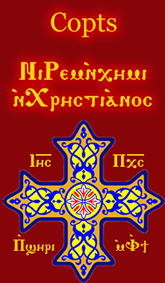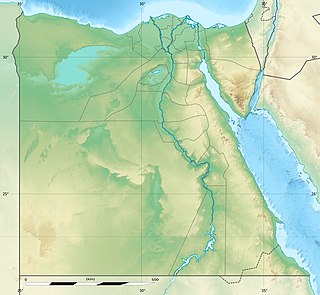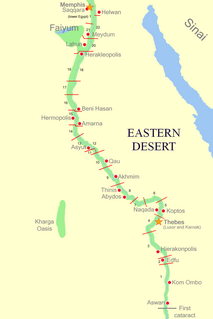
Hapi was the god of the annual flooding of the Nile in ancient Egyptian religion. The flood deposited rich silt on the river's banks, allowing the Egyptians to grow crops. Hapi was greatly celebrated among the Egyptians. Some of the titles of Hapi were "Lord of the Fish and Birds of the Marshes" and "Lord of the River Bringing Vegetation". Hapi is typically depicted as an androgynous figure with a large belly and pendulous breasts, wearing a loincloth and ceremonial false beard.

Khnum was one of the earliest-known Egyptian deities, originally the god of the source of the Nile. Since the annual flooding of the Nile brought with it silt and clay, and its water brought life to its surroundings, he was thought to be the creator of the bodies of human children, which he made at a potter's wheel, from clay, and placed in their mothers' uteruses. He later was described as having moulded the other deities, and he had the titles "Divine Potter" and "Lord of created things from himself".

Satis, also known by numerous related names, was an Upper Egyptian goddess who, along with Khnum and Anuket, formed part of the Elephantine Triad. A protective deity of Egypt's southern border with Nubia, she came to personify the former annual flooding of the Nile and to serve as a war, hunting, and fertility goddess.

Elephantine ( EL-i-fan-TY-nee, -TEE-; Ancient Egyptian: ꜣbw; Egyptian Arabic: جزيرة الفنتين, romanized: Gazīrat il-Fantīn; Greek: Ἐλεφαντίνη; Coptic: is an island on the Nile, forming part of the city of Aswan in Upper Egypt. There are archaeological sites on the island.
The Elephantine Papyri consist of 175 documents from the Egyptian border fortresses of Elephantine and Aswan, which yielded hundreds of papyri in Hieratic and Demotic Egyptian, Aramaic, Koine Greek, Latin and Coptic, spanning a period of 1000 years. The documents include letters and legal contracts from family and other archives, and are thus an invaluable source of knowledge for scholars of varied disciplines such as epistolography, law, society, religion, language and onomastics. They are a collection of ancient Jewish manuscripts dating from the 5th century BCE. They come from a Jewish community at Elephantine, then called ꜣbw. The dry soil of Upper Egypt preserved documents from the Egyptian border fortresses of Elephantine and Aswan.

The Episcopal Church in Jerusalem and the Middle East is a province of the Anglican Communion stretching from Iran in the east to Algeria in the west, and Cyprus in the north to Somalia in the south. It is the largest and the most diverse Anglican province. The church is headed by a President Bishop, currently the Most Reverend Suheil Dawani, who ranks as a representative primate in the Anglican Communion. The Central Synod of the church is its deliberative and legislative organ. The province is divided into four dioceses:

El Nabatat Island or Kitchener's Island, is a small, oval-shaped island in the Nile at Aswan, Egypt. It is less than a kilometer long and its width is less than ½ a kilometer. The Aswan Botanical Garden is located on the island.

The Thebaid or Thebais was a region of ancient Egypt, which comprised the thirteen southernmost nomes of Upper Egypt, from Abydos to Aswan.

Sehel Island is located in the Nile, about 2 miles (3.2 km) southwest of Aswan in southern Egypt. It is a large island, and is roughly halfway between the city and the upstream Aswan Low Dam.

The Cataracts of the Nile are shallow lengths of the Nile River, between Aswan and Khartoum, where the surface of the water is broken by many small boulders and stones jutting out of the river bed, as well as many rocky islets. In some places, these stretches are punctuated by whitewater, while at others the water flow is smoother, but still shallow.

Saint Exuperius was Bishop of Toulouse at the beginning of the 5th century.

The Holy Synod of the Coptic Orthodox Church of Alexandria is the highest Orthodox authority in the Coptic Orthodox Church of Alexandria. It formulates the rules and regulations regarding matters of the church's organisation and faith.

The Anglican / Episcopal Diocese of Egypt with North Africa and the Horn of Africa is a diocese of the Episcopal Church in Jerusalem and the Middle East. It was originally part of the Diocese of Jerusalem, founded in 1841 by the Archbishop of Canterbury. The Diocese of Egypt was later given autonomy and its first bishop was Llwellyn Gwynne (1920-1946).

The Coptic Diocese of Faras is a titular diocese of the Coptic Orthodox Church formerly located at Pakhoras in Nobadia.

Gabal Tingar is a small mountain in Egypt, used as a granodiorite quarry in ancient times. The site is located on the west bank of the River Nile, west of Elephantine, near Aswan. It is thought to have been the source for the stone that was used to create the stele that the Rosetta Stone came from.

Ta-Seti was the first nome of Upper Egypt, one of 42 nomoi in Ancient Egypt. Ta-Seti also marked the border area towards Nubia.
John Benjamin Grellinger served as a Roman Catholic auxiliary bishop of the Roman Catholic Diocese of Green Bay. He was also titular bishop of Syene.
Bishop Serapion of the Los Angeles was born in Assiut on November 10, 1951. Following his graduation from the Faculty of Medicine at Assiut in 1975 he practiced medicine in Aswan.

Martin Bommas is a German Egyptologist, archaeologist, and philologist. Since 2018, he has been Professor and Director of the Museum of Ancient Cultures at Macquarie University in Sydney, Australia.



















